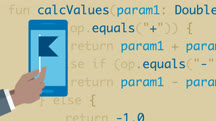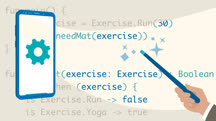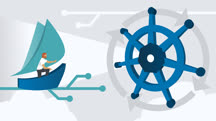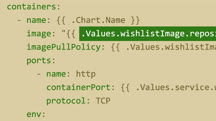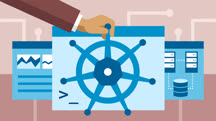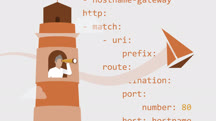Course catalog
Categories
Showing 4,461-4,480 of 9,131 items.
Kotlin Essential Training
Get up and running with Kotlin. This course provides a comprehensive overview of what developers need to create command-line programs using the Kotlin programming language.
Kotlin Essential Training
Learn the essentials of Kotlin programming. This course covers the basics any beginner Kotlin programmer needs to get started writing Kotlin code for Android and other platforms.
Kotlin for Android: Best Practices
Discover how to leverage the power of Kotlin when developing Android mobile apps. Learn best practices for working with some of this popular language’s most helpful features.
Kotlin for Android: Creating a Two-Screen App
Learn how to create a two-screen Android app—complete with a button that allows you to move between screens—using the Kotlin programming language.
Kotlin for Java Developers
Learn the basics of Kotlin—a concise, easy-to-use programming language from JetBrains—and explore its interoperability with Java.
Kubernetes Essential Training: Application Development
Take your Kubernetes knowledge from theory to practice. Learn how to use Kubernetes to develop and run real-world applications.
Kubernetes for Java Developers
Learn how to deploy Java applications to containers on the cloud with Kubernetes and Amazon Web Services.
Kubernetes: Cloud Native Ecosystem
Learn about the tools and platforms provided by the Cloud Native Computing Foundation and the problems these tools can solve.
Kubernetes: Continuous Delivery with Spinnaker
Learn how to use Spinnaker—an open-source, multicloud continuous delivery platform—to enable continuous delivery with Kubernetes.
Kubernetes: Microservices
Get started with microservices. Learn how to break monolithic applications down into nimble microservices and deploy them in a container-centric Kubernetes environment.
Kubernetes: Monitoring with Prometheus
Learn how Prometheus—an open-source systems monitoring and alerting toolkit—pairs with Kubernetes and works to monitor distributed systems.
Kubernetes: Native Tools
Learn how to use the native tools provided by the Kubernetes ecosystem. Discover how to use these tools to more effectively build, manage, debug, and scale applications.
Kubernetes: Package Management with Helm
Speed up your deployments with Helm, the package management tool for Kubernetes. Learn how to install and configure a Helm chart, deploy an application using Helm, and more.
Kubernetes: Service Mesh with Istio
Learn how to use Istio, a service mesh technology, in a Kubernetes environment to address some of the biggest issues with building microservice-based distributed software systems.
Kubernetes: Your First Project (217988)
This course walks you through your first Kubernetes project, in which you help a fictional company, Explore California, move their static website, currently running in AWS on virtual machines, into containers through Kubernetes. Instructor Carlos Nunez explores the core concepts of what makes Kubernetes tick: containers, the scheduler, the API server, the controller manager, and kube-proxy. Next, he shows you how to containerize the Explore California site and use Make to automate starting the website with Docker. Carlos steps through using Helm, one of the world’s most popular packaging tools for Kubernetes, to author a “Helm chart” that deploys Explore California onto a local Kubernetes cluster provisioned with Kind, an instance of Kubernetes on top of Docker. Finally, he deploys Explore California into AWS Elastic Kubernetes Service (a traditional managed Kubernetes offering) and AWS Elastic Container Registry (a “private” alternative to Docker Hub).
Landscape Photography: Autumn
Capture the beauty of the most colorful season with this collection of shooting and post-processing tips from landscape photographer Justin Reznick.
Landscape Photography: California's Mobius Arch
Photographer and outdoor enthusiast Keith Kiska documents the drama of the Mobius Arch, a natural rock formation in California's Sierra Nevada mountains.
Landscape Photography: Iceland
Discover the surreal and spectacular landscapes of Iceland, and learn important insights into photographing on this stark and beautiful island In the North Atlantic.
Landscape Photography: Night Landscape
Learn how to capture the drama and beauty of the nighttime landscape in these tutorials filmed along the surreal shoreline of the Salton Sea and in the Anza-Borrego Desert.
Landscape Photography: Telephoto Lenses
Explore the creative options that a telephoto lens provides in landscape photography. Tips for isolating subjects in nature and compressing distance.

